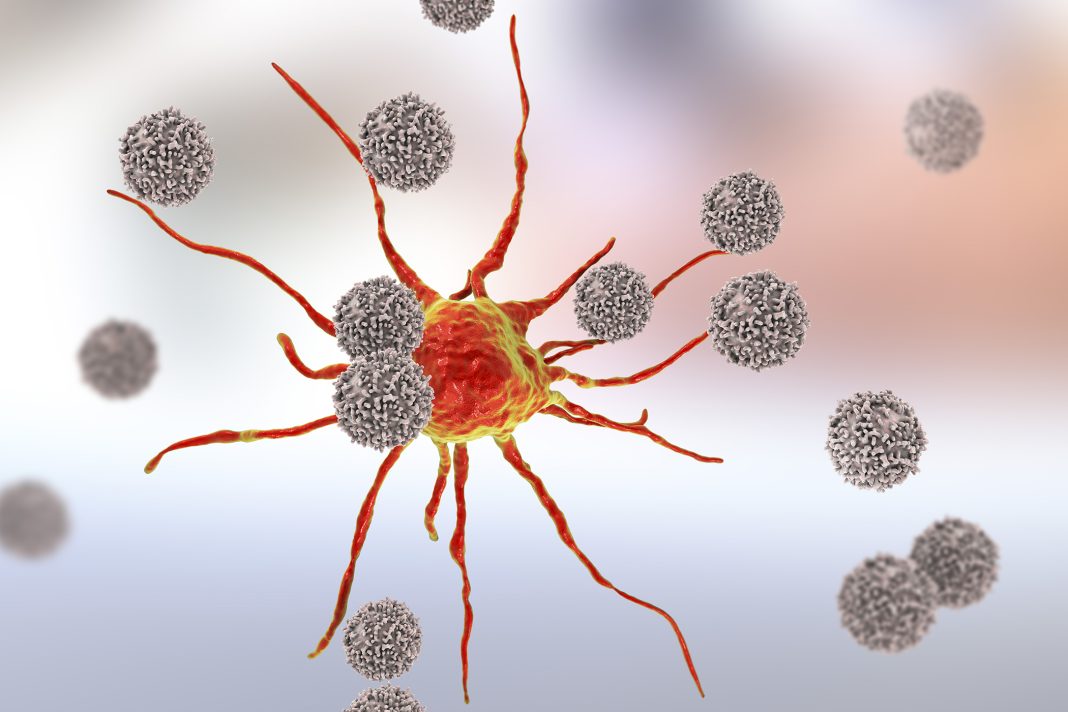Researchers from the Children’s Hospital of Philadelphia (CHOP) identified a key metabolite in T cells that helps direct immune responses and explains at a single-cell level why immune cells that most efficiently recognize pathogens, vaccines, or diseased cells grow and divide faster than other cells.
The findings also indicate that a better understanding of this metabolite, nicotinamide adenine dinucleotide (NAD) and its role in immune response could improve the design of immunotherapies and create longer-lived responses against different types of cancer as well as enhance vaccine strategies.
“We believe this work shows how single cell differences in metabolism are a key reason why similar cells sometimes display strikingly different behaviors and that this may provide insight into underlying processes that drive disease and dysfunction that cannot simply be explained by gene regulation or signaling,” said Will Bailis, PhD, assistant professor of pathology and laboratory medicine at CHOP and the Perelman School of Medicine of the University of Pennsylvania. “With more work, we also believe that this information could potentially be used to improve vaccine strategies and the response and durability of cell-based therapies used to treat cancer and other diseases.”
Ballis is senior author of the team’s published paper in Science Immunology, titled “Single-cell NAD(H) levels predict clonal lymphocyte expansion dynamics.”
Antigens are foreign substances that our immune systems recognize and respond to by producing more T cells and B cells. These immune cells each have unique receptors that recognize specific antigens so they can respond appropriately. They can also “remember” and respond similarly when exposed to the same antigen again. How well a T or B cell sees its antigen is known as its affinity. “The affinity of the antigen receptor (TCR or BCR) to cognate antigen determines the magnitude of the primary response as well as the rate at which naive lymphocytes exit quiescence,” the authors explained.
This fundamental concept of immunology is how vaccines work. When T and B cells encounter a pathogen, the body needs those that recognize their antigen with high affinity to divide more quickly and produce more daughter cells that can then attack the invading pathogen. However, the mechanisms that underly this ability of high affinity immune cells to respond more efficiently have remained a mystery.
After encountering an antigen, T and B cell metabolism needs to change to allow them to properly respond. “Lymphocyte activation is accompanied by extensive transcriptional and metabolic changes that support cell division in proportion to antigen affinity,” the team commented. “… During this exit from quiescence, naive lymphocytes reprogram their transcriptome and proteome while, at the same time, remodeling cellular metabolism to meet the demands of rapid proliferation.”
Bailis and colleagues wanted take a closer look at the cells’ metabolism to better understand how high affinity T cells know that they need to divide more quickly in response to an antigen. “We wanted to see if specific metabolites were sensitive to T cell receptor affinity and controlled T cell expansion during immune responses,” said Bailis. “Here, we test the hypothesis that TCR signaling relays antigen affinity to a discrete set of metabolic pathways responsible for supporting clonal dynamics,” the authors noted in their paper.
Through a series of laboratory studies the researchers identified NAD as a key, affinity-dependent component of T cell receptor metabolic reprogramming during the early stages of a T cell activation. “… we identify nicotinamide adenine dinucleotide (NAD) biosynthesis as a biochemical hub for the T cell receptor affinity–dependent metabolome,” they stated. “Through this central anabolic role, we found that NAD biosynthesis governs a quiescence exit checkpoint, thereby pacing proliferation.”
Using flow cytometry, the researchers could look at NAD in single cells immediately after activation and show how it dictates the number of times T cells can divide in the future. The researchers could then essentially predict how T cells behave and how many times they divide, based on how much NAD they started with. Additionally, the investigators found that manipulating how much NAD a cell was allowed to make could control when that cell went from a resting state to an actively dividing state, suggesting that the metabolite could be used to improve response in certain T cell-driven therapies or vaccines.
The team suggested that their findings offer up a metabolic framework for how ligand affinity and signal strength dictate clonal lymphocyte dynamics, indicating that their combined results support “… a broader paradigm in which complex signaling networks converge on metabolic pathways to control single-cell behavior … We demonstrate that whereas mitogenic signaling sets maximal lymphocyte proliferative potential, cellular NAD levels and the biochemistry it facilitates control the rate cells divided within these bounds,” they concluded.


